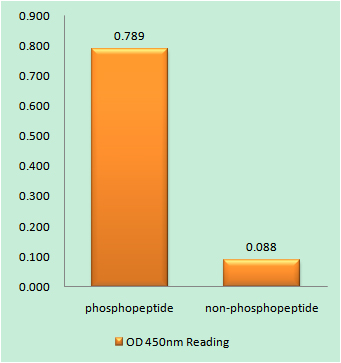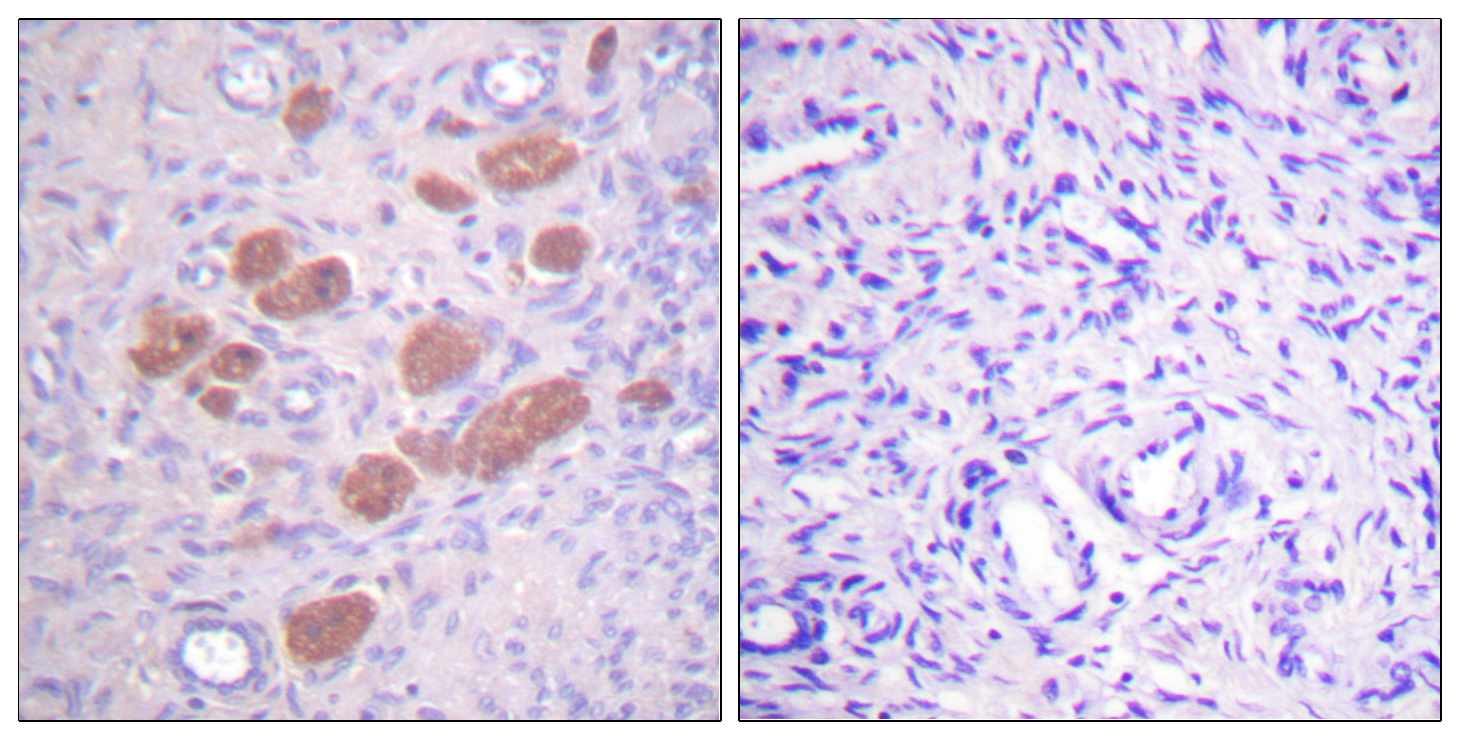p40-phox (phospho Thr154) Polyclonal Antibody
- Catalog No.:YP0971
- Applications:IHC;IF;ELISA
- Reactivity:Human;Mouse
- Target:
- p40-phox
- Fields:
- >>Phagosome;>>Osteoclast differentiation;>>Neutrophil extracellular trap formation;>>Leukocyte transendothelial migration;>>Prion disease;>>Leishmaniasis;>>Diabetic cardiomyopathy;>>Lipid and atherosclerosis
- Gene Name:
- NCF4
- Protein Name:
- Neutrophil cytosol factor 4
- Human Gene Id:
- 4689
- Human Swiss Prot No:
- Q15080
- Mouse Gene Id:
- 17972
- Mouse Swiss Prot No:
- P97369
- Immunogen:
- The antiserum was produced against synthesized peptide derived from human p40 phox around the phosphorylation site of Thr154. AA range:120-169
- Specificity:
- Phospho-p40-phox (T154) Polyclonal Antibody detects endogenous levels of p40-phox protein only when phosphorylated at T154.
- Formulation:
- Liquid in PBS containing 50% glycerol, 0.5% BSA and 0.02% sodium azide.
- Source:
- Polyclonal, Rabbit,IgG
- Dilution:
- IHC 1:100 - 1:300. ELISA: 1:5000.. IF 1:50-200
- Purification:
- The antibody was affinity-purified from rabbit antiserum by affinity-chromatography using epitope-specific immunogen.
- Concentration:
- 1 mg/ml
- Storage Stability:
- -15°C to -25°C/1 year(Do not lower than -25°C)
- Other Name:
- NCF4;SH3PXD4;Neutrophil cytosol factor 4;NCF-4;Neutrophil NADPH oxidase factor 4;SH3 and PX domain-containing protein 4;p40-phox;p40phox
- Molecular Weight(Da):
- 39kD
- Background:
- The protein encoded by this gene is a cytosolic regulatory component of the superoxide-producing phagocyte NADPH-oxidase, a multicomponent enzyme system important for host defense. This protein is preferentially expressed in cells of myeloid lineage. It interacts primarily with neutrophil cytosolic factor 2 (NCF2/p67-phox) to form a complex with neutrophil cytosolic factor 1 (NCF1/p47-phox), which further interacts with the small G protein RAC1 and translocates to the membrane upon cell stimulation. This complex then activates flavocytochrome b, the membrane-integrated catalytic core of the enzyme system. The PX domain of this protein can bind phospholipid products of the PI(3) kinase, which suggests its role in PI(3) kinase-mediated signaling events. The phosphorylation of this protein was found to negatively regulate the enzyme activity. Alternatively spliced transcript variants encoding d
- Function:
- function:Component of the NADPH-oxidase, a multicomponent enzyme system responsible for the oxidative burst in which electrons are transported from NADPH to molecular oxygen, generating reactive oxidant intermediates. It may be important for the assembly and/or activation of the NADPH-oxidase complex.,similarity:Contains 1 PX (phox homology) domain.,similarity:Contains 1 SH3 domain.,subunit:p40-PHOX associates primarily with p67-PHOX to form a complex with p47-PHOX.,tissue specificity:Expression is restricted to hematopoietic cells.,
- Subcellular Location:
- Cytoplasm, cytosol . Endosome membrane ; Peripheral membrane protein ; Cytoplasmic side . Membrane ; Peripheral membrane protein .
- Expression:
- Expression is restricted to hematopoietic cells.
- June 19-2018
- WESTERN IMMUNOBLOTTING PROTOCOL
- June 19-2018
- IMMUNOHISTOCHEMISTRY-PARAFFIN PROTOCOL
- June 19-2018
- IMMUNOFLUORESCENCE PROTOCOL
- September 08-2020
- FLOW-CYTOMEYRT-PROTOCOL
- May 20-2022
- Cell-Based ELISA│解您多样本WB检测之困扰
- July 13-2018
- CELL-BASED-ELISA-PROTOCOL-FOR-ACETYL-PROTEIN
- July 13-2018
- CELL-BASED-ELISA-PROTOCOL-FOR-PHOSPHO-PROTEIN
- July 13-2018
- Antibody-FAQs
- Products Images

- Enzyme-Linked Immunosorbent Assay (Phospho-ELISA) for Immunogen Phosphopeptide (Phospho-left) and Non-Phosphopeptide (Phospho-right), using p40 phox (Phospho-Thr154) Antibody

- Immunohistochemistry analysis of paraffin-embedded human ovary, using p40 phox (Phospho-Thr154) Antibody. The picture on the right is blocked with the phospho peptide.



